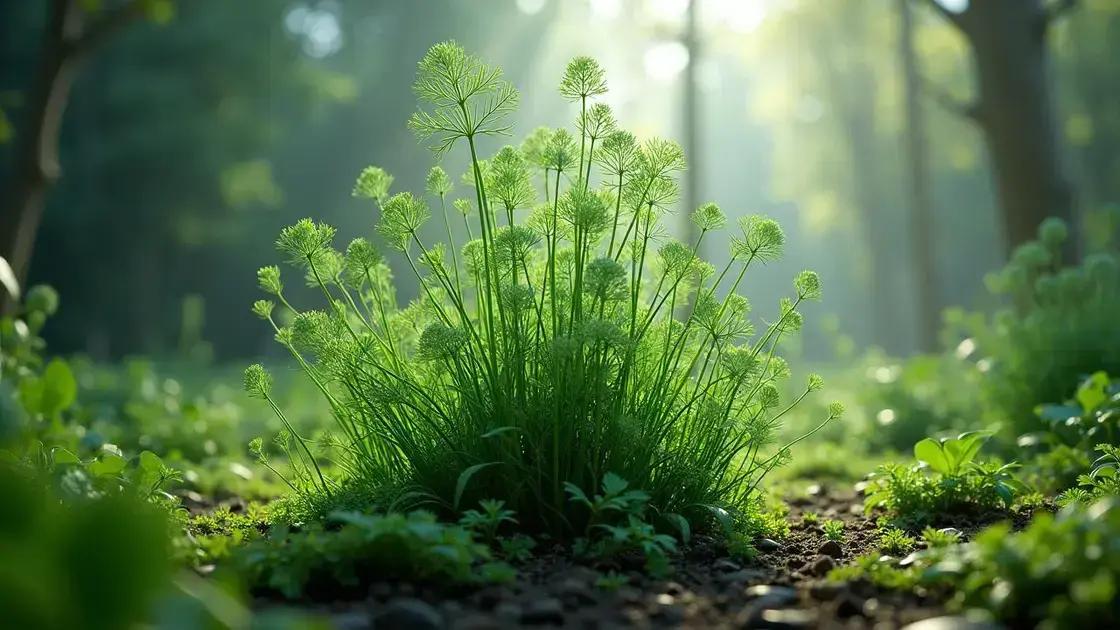How to Take Care of a Dill Plant: 5 Essential Tips for Success
How to take care of a dill plant can be a rewarding journey, revealing the delightful nuances of herb gardening. By nurturing dill with the right conditions, you can enhance both your cooking and garden. Discovering the secrets behind its growth can transform novice gardeners into herb enthusiasts.
Table of Contents
ToggleEssential soil requirements for a healthy dill plant
How to take care of a dill plant starts with understanding its essential soil requirements. Dill thrives in well-draining soil, rich in organic matter, which encourages healthy root development and vibrant growth.
To create the perfect environment for your dill, consider the following factors:
- Soil Type: Choose sandy loam or loamy soil for the best drainage and aeration.
- pH Level: Aim for a soil pH between 6.0 and 7.0 for optimal nutrient availability.
- Organic Matter: Incorporate compost or well-rotted manure to enrich the soil.
Moreover, proper soil management can significantly impact yields. Here’s how to prepare your soil effectively:
- Test the soil using a pH kit to ensure it’s within the desired range.
- Add organic materials to improve nutrient content.
- Till the soil to a depth of about 12 inches to aerate it.
For containers, ensure the potting mix is specifically designed for herbs and provides good drainage. You can also mix in some perlite or vermiculite to enhance aeration.
In conclusion, knowing how to take care of a dill plant through soil preparation is crucial for achieving lush growth. By focusing on soil type, pH, and organic matter, you can create a thriving environment. For more gardening tips or exploring indoor gardening techniques, check out additional resources.
Understanding sunlight exposure for optimal dill growth

Understanding sunlight exposure for optimal dill growth is crucial for cultivating healthy herbs. Dill requires plenty of light to thrive, and understanding how to provide that will ensure your plant flourishes.
Here’s what you need to know about sunlight exposure:
- Sunlight Requirements: Dill typically requires 6 to 8 hours of direct sunlight daily for optimal growth.
- Light Conditions: Morning sunlight is best as it helps to prevent diseases.
- Indoor vs. Outdoor: For indoor plants, place them near a south-facing window to maximize light intake.
It’s also essential to monitor your dill for signs of inadequate light:
- Stretched or leggy growth indicates it is seeking more light.
- Pale leaves may suggest a lack of sufficient sunlight.
For those growing dill in containers or indoors, consider using grow lights to supplement natural sunlight, especially during darker months. This can ensure your dill receives the necessary light to thrive. You can also experiment with rotating the pots to give each side of the plant equal exposure to light.
By providing the right amount of sunlight exposure, you can enhance your dill plant’s growth and flavor. For additional tips on exploring indoor gardening techniques, consider checking out various resources available online.
Fertilizer application techniques for strong dill plants
Fertilizer application techniques for strong dill plants play a crucial role in ensuring healthy growth and flavorful leaves. Applying the right type and amount of fertilizer can significantly enhance the vigor of your dill plant.
When it comes to feeding your dill, consider the following:
- Type of Fertilizer: Use a balanced fertilizer with an N-P-K ratio, such as 10-10-10. Organic options like compost or fish emulsion are also beneficial.
- Application Timing: Apply fertilizer during the growth phase, particularly when seedlings are established but before flowering begins.
- Application Methods: Fertilizers can be applied through:
- Top dressing: Sprinkle granulated fertilizer around the base of the plant and gently work it into the soil.
- Diluted liquid feed: Mix liquid fertilizer with water and apply directly to the soil during watering.
To ensure optimal nutrient uptake, monitor your dill plants. Look for signs of nutrient deficiency, such as yellowing leaves or stunted growth, which may indicate the need for additional feeding.
It’s also essential to apply fertilizer in moderation, as over-fertilization can be harmful. Following these fertilizer application techniques can lead to more robust dill plants and increased yields.
For further gardening insights and exploring indoor gardening techniques, don’t hesitate to seek out more resources on plant care.
In conclusion
Caring for dill plants requires attention to essential factors like soil quality, sunlight exposure, and proper fertilizer application. By understanding how to take care of a dill plant effectively, you can enjoy robust growth and flavorful harvests. Implementing the techniques discussed will lead to a thriving dill garden, whether you are growing outdoors or indoors. For more valuable insights, check out these tips on enhancing your indoor garden.

